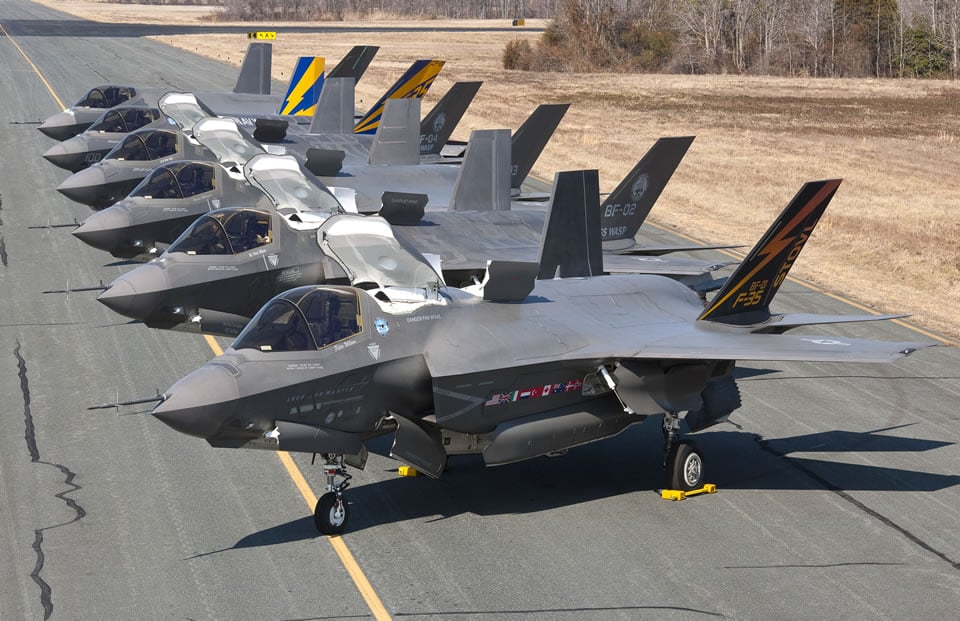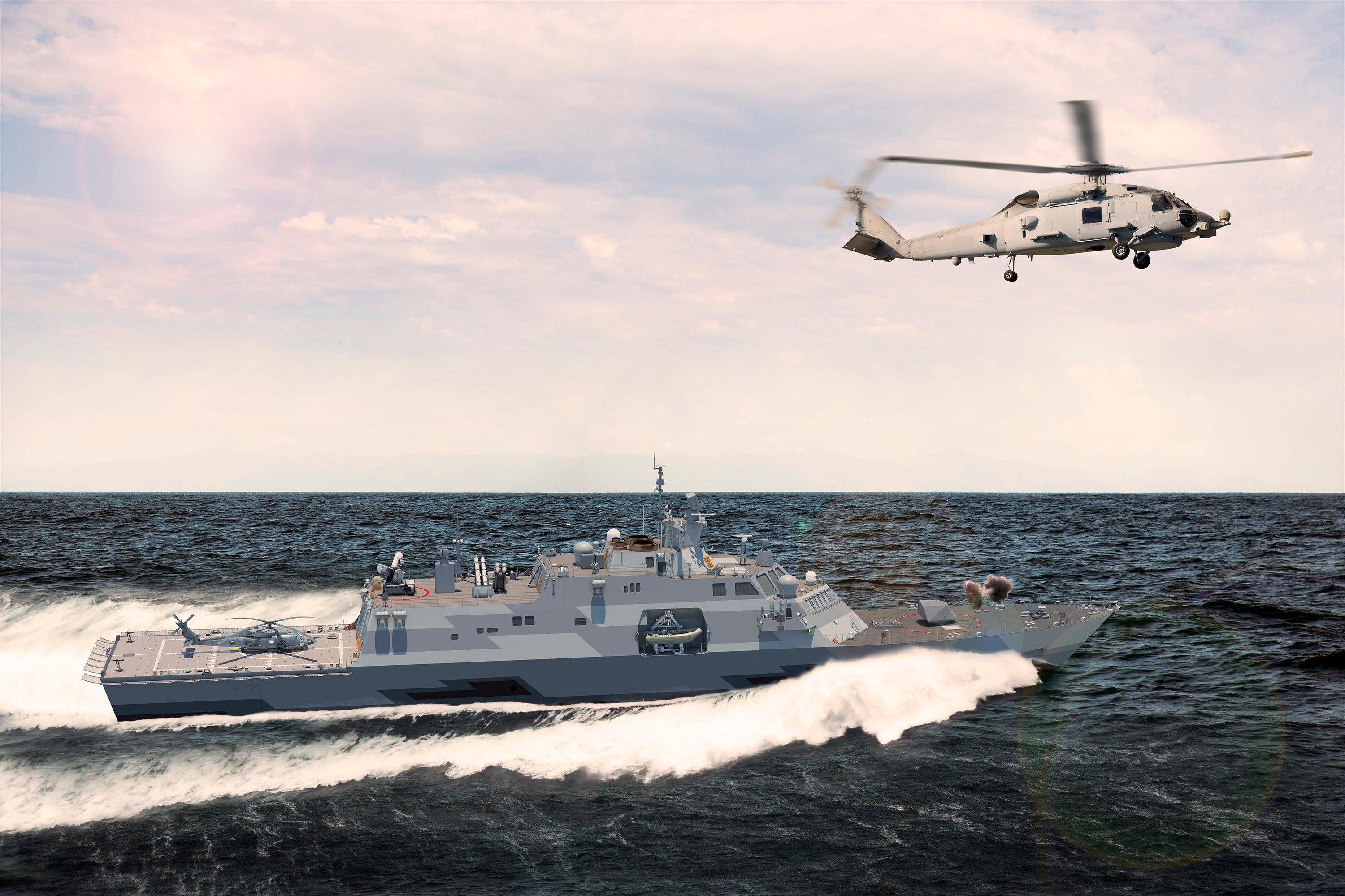
Lockheed Martin officials say their loss to Boeing in three recent aircraft competitions indicates that Pentagon weapon buyers are valuing low price tags over high-tech capabilities, which may lead the company to question its participation in some future competitions.
The company reported strong revenue growth and expected solid earnings in the future, but during a Tuesday morning conference call with Wall Street analysts, company officials sounded burned by losing out on three significant contracts during the recently completed third quarter of 2018.
“We do see that affordability is a very important element for them,” said Marillyn Hewson, Lockheed Martin’s chief executive, referring to the Pentagon’s weapons buyers.
In a competition pitting designs from Lockheed Martin, General Atomics and Boeing, the Navy awarded Boeing an $805-million award in August to build the first four unmanned carrier-based aerial refueling tankers, the MQ-25A Stingray. Ultimately, the Navy wants to purchase 72 more vehicles, for a program price of roughly $13 billion. Boeing also beat out Lockheed Martin for a pair of Air Force contracts – $2.38 billion to replace the Air Force fleet of H-1 Huey helicopters, and $9.2 billion for the new fleet of Air Force T-X trainer jets.
“We believe our proposals represented outstanding technical offerings at our lowest possible pricing,” Hewson said. “Had we matched the winning prices and been awarded the contracts, we estimate that we would have incurred cumulative losses across all three programs in excess of $5 billion; an outcome that we do not feel would have been in the best interest of our stockholders or customers.”
Hewson and Bruce Tanner, Lockheed Martin’s chief financial officer, downplayed the long-term significance of missing out on this trio of large contracts. Lockheed Martin reported revenues of $14.3 billion for the quarter, compared to revenues of $12.3 billion a year ago. Earnings for the quarter were $1.5 billion for the quarter, compared to earnings of $963 million a year ago.
Increased sales of F-35 Lightning II Joint Strike Fighters as production increases, as well as increased demand for missiles, were vital to the revenue increases. Looking forward, even with Pentagon spending not expected to grow, Tanner expects Lockheed Martin’s profits from sales to grow, resulting in cash from operations to remain in the $7-billion range for the next three years.
However, neither Hewson nor Tanner masked their disappointment in the selection of Boeing over Lockheed Martin for the three aviation programs.
“Those were disappointing for a lot of reasons. But the fact they really decided, all three, on an LPTA (lowest price technically acceptable) basis, didn’t help the situation,” Tanner said. “It’s not getting the best capabilities for the warfighter in the hands of the warfighter.”
A year ago, when discussing the MQ-25 program, Navy officials suggested capability was their primary focus. Cost estimates were specifically not addressed because the Navy wanted to learn what was possible, Rear Adm. Mark Darrah, Program Executive Officer Unmanned Aviation and Strike Weapons, told USNI News in July 2017.
“When we put a number out there, eerily they tend to get to that number and go backwards, go backwards in their development, so they hit that number. We are taking a different approach this time. We’re not going to define that number at this point and direct them to provide us with their input so that we can adequately and accurately determine what they truly can do,” Darrah said in the 2017 interview.
On Tuesday, Hewson acknowledged the types of projects Lockheed Martin bids on in the future could be affected by the Pentagon’s focus on price when seeking new weapons programs.
“We’re going to pursue good business opportunities for us,” Hewson said. “We have talked about this before: affordability is an important value for them.”

Hewson also addressed the growing speculation over whether defense contractors would be allowed to continue doing business with Saudi Arabia, as the United States government still grapples with the fallout from the death of journalist Jamal Khashoggi after last seen entering the Saudi consulate in Istambul. The kingdom is a Lockheed Martin customer, but Hewson said the company had relatively minor exposure to any fallout from having arms deal nixed by the U.S. government.
Currently, the largest contract Lockheed Martin has with Saudi Arabia is to build the kingdom’s fleet of four multi-mission surface combatant ships, based on the Littoral Combat Ship, worth $6 billion. Saudi Arabia just awarded Lockheed Martin a $450-million detailed planning and design contract, which is related to the planned four-ship purchase.
“The largest order we’ve been waiting on obviously is for THAAD (Terminal High Altitude Area Defense), ” Tanner said. “That has not taken place yet. Not sure when that will take place. The interesting thing with the THAAD order is, while it brings a significant increase in backlog, the resulting sales, profit, and cash flow with that order are very much pushed to the right.”
Required upgrades to Saudi Arabia’s radar technology will delay the $15-billion THAAD order delivery for at least four years, Tanner explained. Without the technical refresh, he said Saudi Arabia would be unable to use the missiles effectively.
“I think we have in 2019 about less than half a billion dollars of sales planned, and I looked out into in 2020, and it’s less than $900 million in sales,” Tanner said. “So it’s not a huge amount of dependency on the activity, even though the opportunities we’ve described are much larger than that obviously.”





